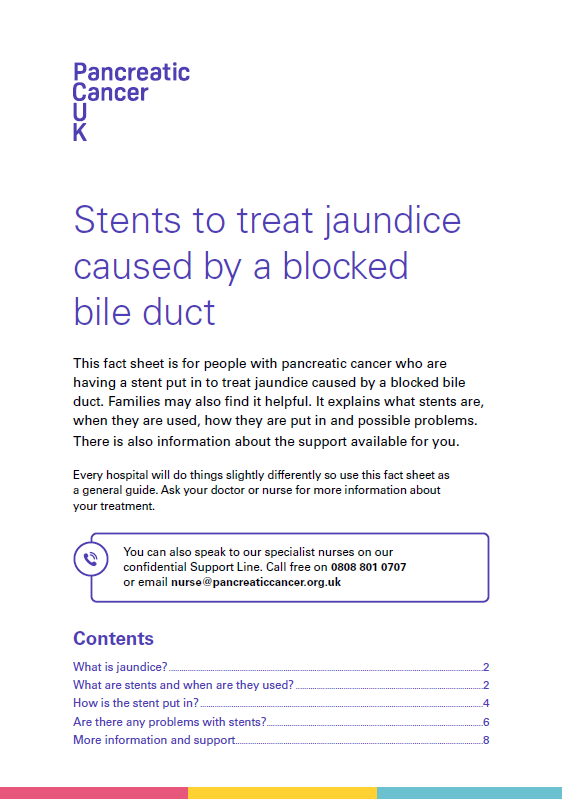Read our fact sheet about stents to treat jaundice caused by pancreatic cancer
To read more about using stents to treat jaundice, download our fact sheet, Stents to treat jaundice caused by pancreatic cancer.
You can also order a physical copy.
Jaundice is when your skin and the whites of your eyes turn yellow. This happens when you get a build-up of bile in your body. Bile is a liquid which your liver makes to help you digest food. Sometimes, pancreatic cancer can block the tube which carries the bile. This tube is called the bile duct. If this tube gets blocked, the bile builds up and you may get jaundice. Read more about jaundice and pancreatic cancer.
Stents are small tubes that are put into the bile duct. Pancreatic cancer can also block the duodenum, which is the first part of the small intestine. This causes sickness. A stent can be put into the duodenum to open it and treat the sickness. Read more about stents for the duodenum here.
Your symptoms should start to improve soon after having a stent put in.
There can be problems with a stent. For example, it can get blocked or move out of place. There is also a risk of getting an infection or an inflamed pancreas (pancreatitis). But your doctor or nurse can treat these problems if they happen.
If you have cancer that can’t be removed by surgery and your bile duct is blocked, you will usually have a stent put in to unblock it. But sometimes surgery called bypass surgery is used to make a new way for bile to flow to the intestines, passing around the blocked bile duct. This is usually done if you were originally having surgery to remove the cancer but that wasn’t possible.
You might want to write down any questions you have for your doctor to take with you. You may also want to take someone with you when you see your doctor. They can write down the answers to any questions you have and any important information.
To read more about using stents to treat jaundice, download our fact sheet, Stents to treat jaundice caused by pancreatic cancer.
You can also order a physical copy.


Talk to your doctor or nurse if you have any questions.
You can also speak to our nurses on our free Support Line with any questions or worries you might have about a stent.


Updated October 2021
Review date October 2023